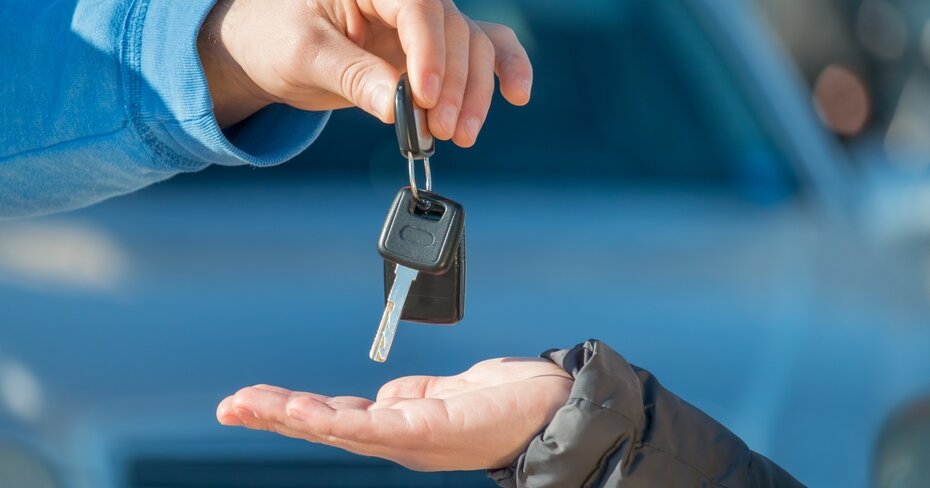What happens if the person you lend your vehicle to gets into an accident?
By: Mike Friskney on October 17, 2024
This article has been updated from a previous version.
Ever lent your vehicle to a friend or family member in the past, thinking it was a harmless favor? Did you know that by doing so, you could be putting yourself at risk of financial and legal consequences if they get into an accident?
Many people assume that the driver’s insurance will cover any and all damages or liabilities caused by an accident — but that’s not exactly how it works in Canada. Your insurance is associated with your vehicle, which means that, as the insured driver, you are responsible for any claim for damages or liabilities caused by the person who borrowed your vehicle.
Not only that, but any accident involving your car will also affect your driving record and your insurance premiums, regardless of who was behind the wheel.
“Unfortunately, this is another common misconception,” says Aaron Calder, an insurance broker with Broadoak Insurance. “Any time an accident claim is processed through your insurance, the accident will appear on your driving record, which can lead to an increase in your premium.”
When your insurance will pay
In most cases, if the borrower damages your vehicle in an accident, your insurance will cover the damages. However, the extent of the coverage depends on your policy, liability, and coverage limits.
In Ontario, under the Insurance Act, it is illegal for the insured person to drive their car or let someone else drive it unless the driver has the legal authority to operate the vehicle.
This means typically, you are insured when someone else drives your car if:
- The driver has a valid license to drive in Canada and is legally allowed to drive in the province or territory.
- They have your permission to drive your vehicle.
- The driver is not operating your vehicle routinely.
- The driver is not listed as an excluded driver in your policy.
- They are not under the influence of any drugs or alcohol.
However, the borrower can take responsibility for the damage if they have something called Liability for Damage to Non-Owned Automobile Coverage (otherwise known as OPCF 27) as an add-on to their own personal insurance. It provides coverage for cars that don’t belong to the policyholder, whether it’s a borrowed car or a rented one.
What about traffic violations?
If your friend of a family member commits a traffic violation with your car, it is their responsibility to pay any fines. They may also receive any demerit points to their licence.
However, if the vehicle is involved in an accident, it involves the owner of the vehicle — not the borrower.
How lending your vehicle can cost you
As the owner of the vehicle, you’re liable for any damage or injuries caused by the driver you lent it to. That means if your claim is denied, you will be responsible for paying for any damages or liabilities out of your own pocket.
The average cost of collision repairs in Canada in the first half of 2023 was $5,044.
Here are some reasons why your insurance company may decline your claim if your friend or family member was driving your vehicle.
Related: Six reasons your auto insurance policy could be cancelled
If they don’t have a valid driver’s licence
To legally drive in Canada, you must have a driver’s licence.
If you lend your vehicle to someone knowing they either didn’t have a valid driver’s licence or had one that was suspended, you would be violating the terms of your insurance policy.
As a result, it’s likely that your insurance company will deny your claim altogether, and as the vehicle owner, you will be responsible for covering all associated costs and liabilities incurred.
If you argue that you had no knowledge of their license’s invalidity, then it’s possible your insurance company will take that into consideration.
If they use your vehicle frequently
There’s a difference between occasional borrowing and regular usage, such as driving a few times a week. If your friend or family member uses your car often or on a semi-regular basis, they should be added to your policy as an “occasional driver”, and you should be paying more per month for your coverage, something known as secondary driver insurance.
Adding a secondary driver to your policy will increase your insurance premiums based on the type of driver they are. The cost may be influenced by factors like age, gender, history of driving and any claims, tickets or fines they have.
Nonetheless, being added as a secondary driver will safeguard them, and paints a clear picture about the level of risk tied to your policy to your insurer.
If they use your vehicle for deliveries
Your insurance policy outlines in strict detail the uses your vehicle is insured for. Commercial use is different than personal use. If someone borrowing your vehicle is using it to deliver food, packages or people, there’s a good chance your accident claim won’t go through.
Why? Because this type of usage is considered “commercial”, and personal vehicle insurance doesn’t cover commercial use.
While popular ride-share apps like Uber offers third-party coverage for their drivers, if you and/or the person borrowing your car are an independent delivery driver, you must opt for commercial insurance coverage.
The simplest way to avoid any risks associated with letting someone else use your vehicle is to be careful of who you lend it to in the first place.
“Personally, I always advise people not to lend their vehicle to anybody,” says Calder. “If you don’t lend it to anyone, there’s no chance of having any issues. If you do lend your vehicle to someone, it is your responsibility to make sure they are legally licensed. Remember, you are responsible for everything they do in your car.”
Make sure your car is only driven by those you trust — and if it becomes a regular occurrence, remember to add them as a secondary driver.
Read next: Not all food delivery apps offer car insurance. What are your options?
Save 23% on average on car insurance
Compare 50+ quotes from Canadian providers in 3 minutes.

.jpg?itok=88nBkwga)
.jpg?itok=W5fSKczJ)